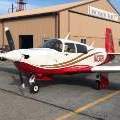Foreflight Legal for IFR Navigation?
-
Members Online
- Marc_B
- gacoon
- alextstone
- 201er
- ElkoRandy20J
- Buckeyechuck
- rturbett
- bluehighwayflyer
- Schllc
- mitchsm
- mmcdaniel33
- takair
- joemoriss
- Beechbum
- Lax291
- RangerM20
- Skyland
- theanswriz42
- Deb
- jamiesj
- Jim Peace
- eman1200
- TCC
- larryb
- Nippernaper
- KSMooniac
- Rmfriday
- wolfbyte
- Jake@BevanAviation
- toto
- Obsession2
- Bartman
- N201MKTurbo
- Rotorhead


Recommended Posts
Join the conversation
You can post now and register later. If you have an account, sign in now to post with your account.